Bedrock: The Film
In the previous post – about the films of Stan Brakhage – I complained that you could not make a film using bedrock; but I stand corrected.
"It is entirely possible to project light through bedrock," an email I soon received explained. "Thin sections, samples of rock ground to a thickness of 30 microns for viewing under a microscope, are a standard tool of petrology."
So I was pointed to a website, did some research – including petrographic imagery at Humboldt State University, a Parisian Atlas minéralogique, and some "plutonic microtextures" at UNC-Chapel Hill – and it's true: you can make your own Mothlight using slices of bedrock. The continental plates as a kind of underground Hollywood. Film in mineral form.
Some examples? Just look below:
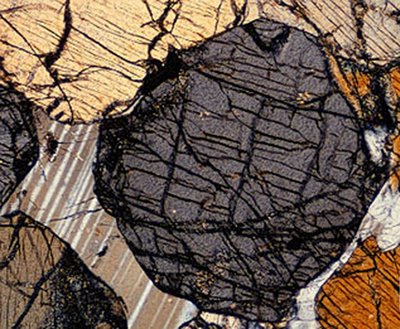

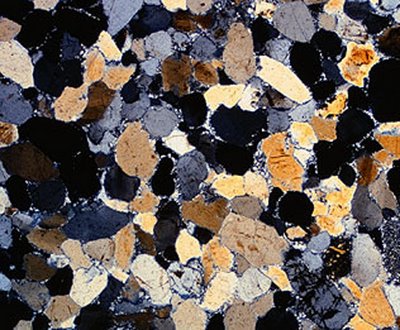
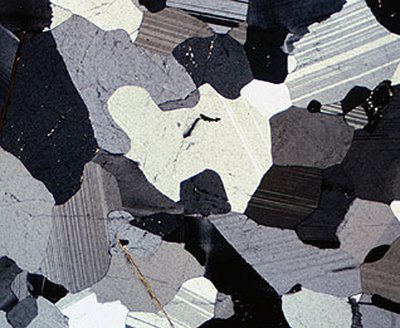


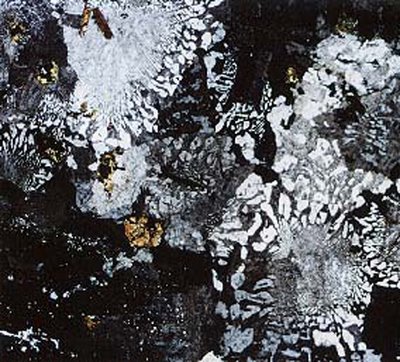
How would you do it? As but one example, you could animate the following sequence –
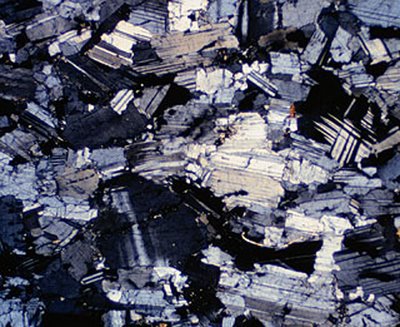
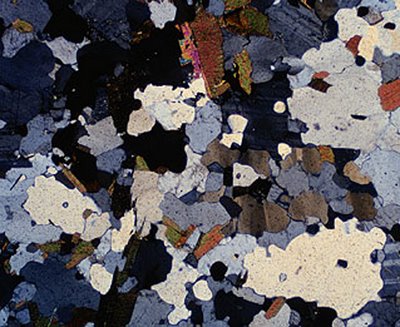
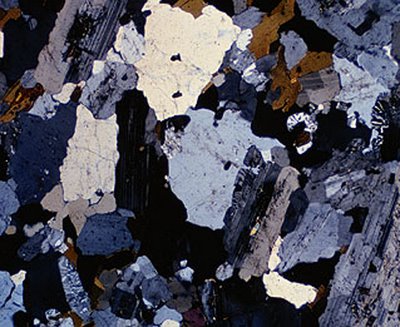
– which would not only display a very obvious sense of visual continuity, it would offer its own short geo-metamorphic narrative: anorthosite becoming gneiss becoming biotite-rich granite.
You could explain and demonstrate simultaneously the formational history of the earth, using abstract patterns of mineral imagery.
Bedrock: The Film.
(Thanks to Mike Weber for the initiating email; and all images above are by Kent Ratajeski at UNC-Chapel Hill).
"It is entirely possible to project light through bedrock," an email I soon received explained. "Thin sections, samples of rock ground to a thickness of 30 microns for viewing under a microscope, are a standard tool of petrology."
So I was pointed to a website, did some research – including petrographic imagery at Humboldt State University, a Parisian Atlas minéralogique, and some "plutonic microtextures" at UNC-Chapel Hill – and it's true: you can make your own Mothlight using slices of bedrock. The continental plates as a kind of underground Hollywood. Film in mineral form.
Some examples? Just look below:







How would you do it? As but one example, you could animate the following sequence –



– which would not only display a very obvious sense of visual continuity, it would offer its own short geo-metamorphic narrative: anorthosite becoming gneiss becoming biotite-rich granite.
You could explain and demonstrate simultaneously the formational history of the earth, using abstract patterns of mineral imagery.
Bedrock: The Film.
(Thanks to Mike Weber for the initiating email; and all images above are by Kent Ratajeski at UNC-Chapel Hill).





Comments are moderated.
If it's not spam, it will appear here shortly!
Looks a little like the first couple minutes of Dancer in the Dark.
So thin, so filled with light. Could you build a house with it?
Late to the party on this post but I'll add a comment. Forty years ago I was involved with a light show company. We experimented with rock thin sections by projecting them through polarizing film (one rotating) and between parallel mirrors. This would project nice colors across an entire wall that would have moveing bands or fluctuating colors, depending upon the type of rock. So, yes you can "build" a house with it.
Post a Comment